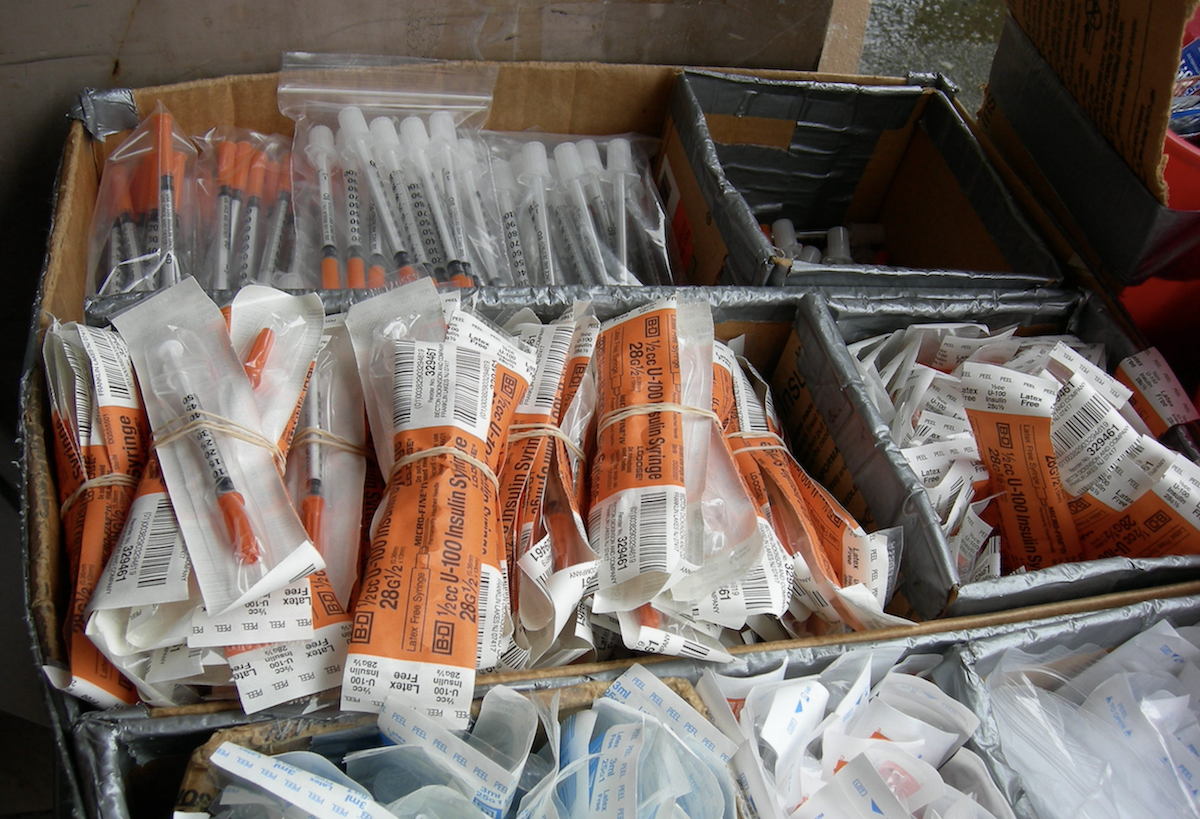In 2015, Scott County, Indiana, saw a huge HIV outbreak among its population of people who use drugs. The county had around 24,000 residents at that time, and 181 people tested positive for the autoimmune disease, representing a rate 50 times the national average.
In response, the county began a syringe service program (SSP), which would need to obtain renewed approval every two years. Last year, the county decided to end it, claiming rates had declined, the program had served its purpose and, NPR reported, that the county did not want to be seen with a program that would make it “easier to abuse drugs.” The program closed its doors at the end of 2021.
It projects that over five years, HIV transmissions among residents who use drugs will increase by almost 60 percent if the closure is permanent.
SSP regularly face uphill battles. Harm reductionists and health agencies like the CDC cite the clear evidence that providing sterile syringes for people to inject drugs with, removing the need to share needles, reduces the spread of blood-borne diseases like HIV. But public and political opinion often oppose them.
New research has simulated the impact of closing Scott County’s SSP. It projects that over five years, HIV transmissions among residents who use drugs will increase by almost 60 percent if the closure is permanent. Such findings will not surprise anyone familiar with the issue. But the paper, published in the journal AIDS, represents important fresh evidence against such closures, as “the first study to the researchers’ knowledge to quantitatively examine the impact of syringe services program closure on HIV incidence,” according to a Brown University press release.
Scott County isn’t alone in seeing its SSP close. Among many examples, West Virginia drafted a law that would see Mercer County’s close as well. According to research from 2016, the CDC identified 220 counties around the United States that could be vulnerable to an outbreak like the one seen in Scott County.
“There are some unique barriers that these programs are facing, especially in the rural areas in the US,” Xiao Zang, a postdoctoral research associate in epidemiology at Brown University School of Public Health and lead author on the research paper, told Filter. “They are dealing with these barriers—these social, structural barriers.”
The National Harm Reduction Coalition notes that SSP are still relatively new in rural America, but that communicating “early and often” with local communities about the programs can help to increase support.
Scott County officials did not respond to Filter’s request for comment by publication time.
Dr. Zang and his colleagues used the kind of simulation modeling that has in the past, he said, been used to model the impacts of preexposure prophylaxis (PrEP) on men who have sex with men.
Much like COVID-19 modelling, this research uses data to predict how the disease would spread by simulating the population’s behaviors—including sexual partnerships and sharing needles for injection drug use. It also makes use of data from pre-existing research on behaviors and HIV rates in the county. The team additionally worked with the Scott County Department of Health to obtain data, and calibrated their model against surveillance data from the Indiana State Department of Health. “We tried to use as much local data as possible,” Zang said.
“We hope that these results will help decision-makers understand the devastating impact that closing a center will have on the community.”
The model predicted the spread of HIV in the region between 2020 and 2025 for four different scenarios: no pause and no closure, permanent closure, delayed closure after two years, and temporary closure for one year.
In all, the research found that permanently closing the SSP would result in an average increase of 63.5 HIV cases over a five-year period, compared to a situation in which the program never closed. If the county decided to delay the program’s closure for two years, the county could see 42.4 more cases compared to sustained operation of the SSP. If the SSP had closed for one year—between April 2020 and March 2021—the county could have expected to see 11.6 more cases.
This type of modeling can easily be adapted to different settings, Zang said, while cautioning against applying these specific findings to different jurisdictions.
“This simulation model provides another way of examining and evaluating health policy impact of interventions in the real world,” Zang said in the press release. “We hope that these results will help decision-makers understand the devastating impact that closing a center will have on the community.”
Photograph of syringe service program supplies by Joe Mabel via Wikimedia Commons/Creative Commons 3.0





Show Comments